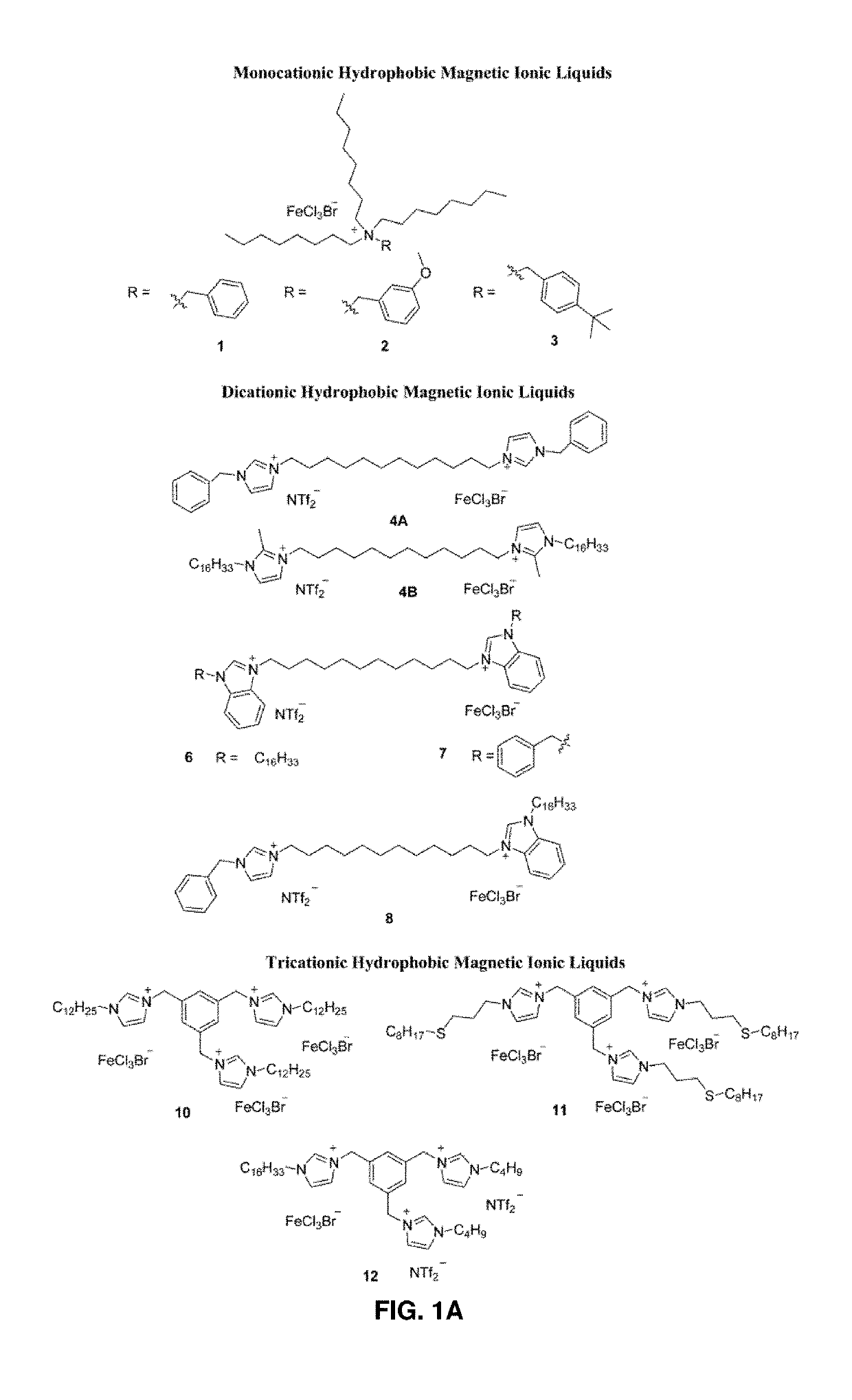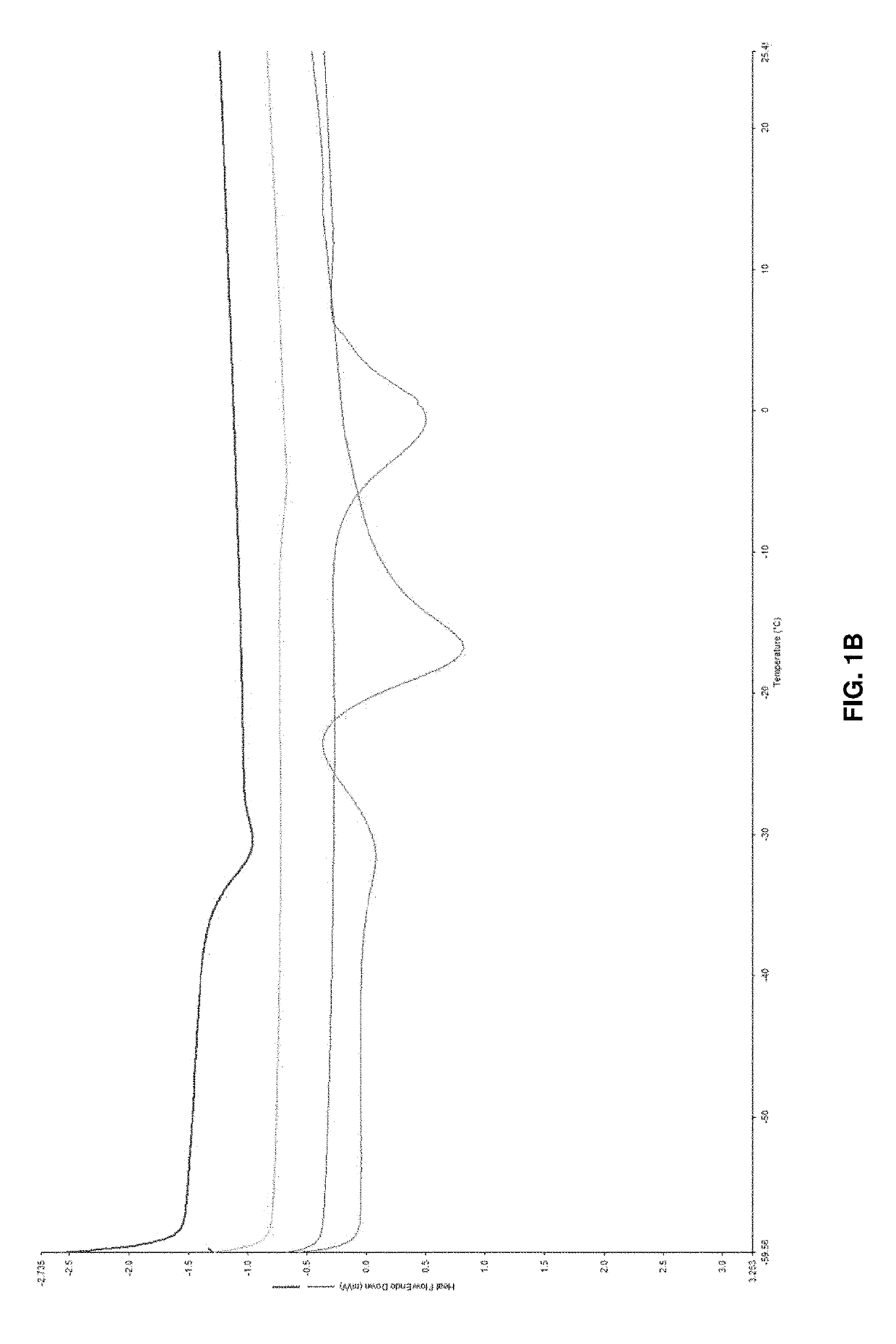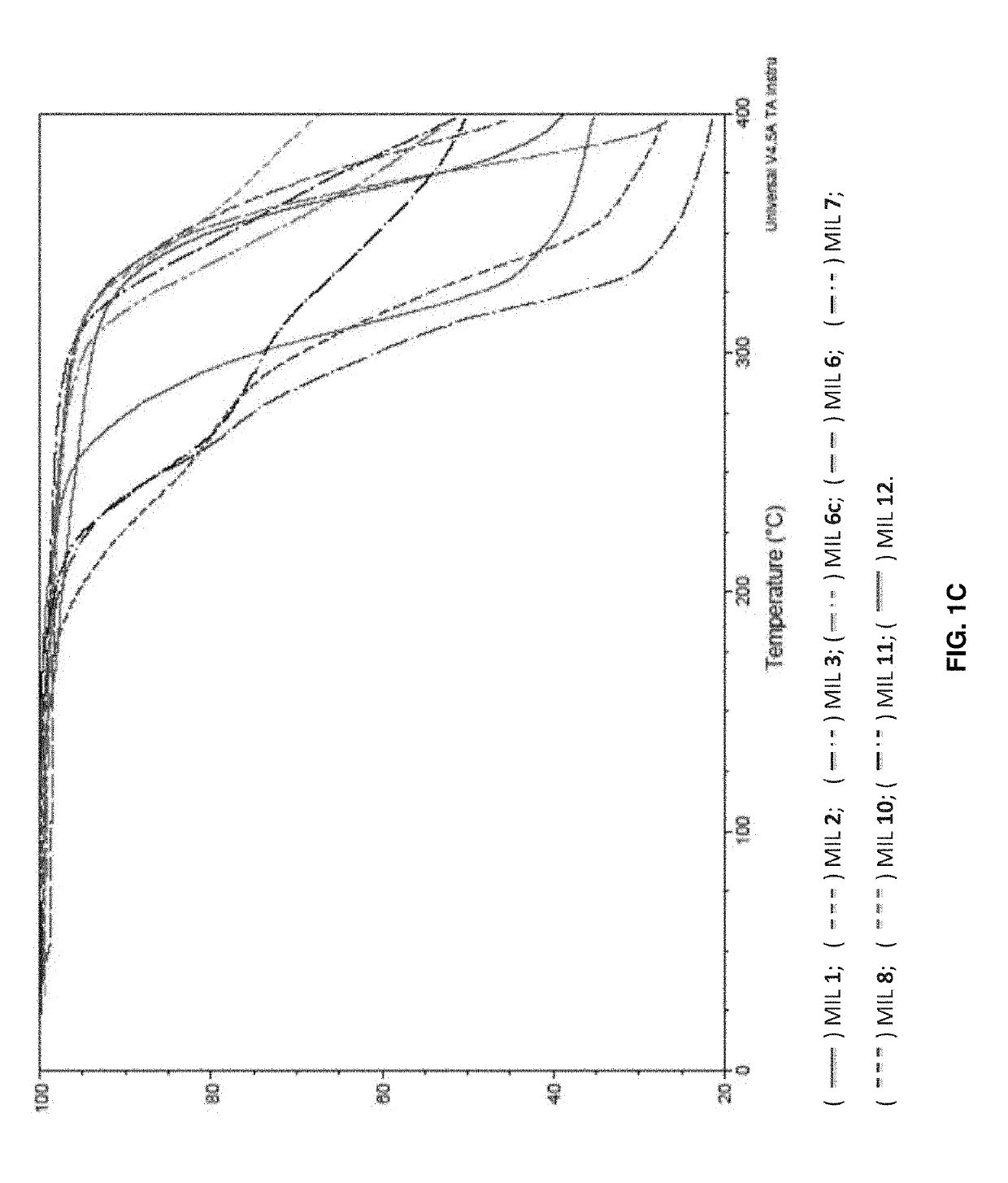Magnetic ionic liquids, methods of making and uses thereof as solvents in the extraction and preservation of nucleic acids
a technology solvent, which is applied in the field of magnetic ionic liquid, can solve the problems of increasing the risk of contamination, the volume of organic solvent consumed, and the time required, and achieves the effect of increasing the effective magnetic moment of an ionic liquid
- Summary
- Abstract
- Description
- Claims
- Application Information
AI Technical Summary
Benefits of technology
Problems solved by technology
Method used
Image
Examples
example 1
Discussion of Example 1
[0167]In Example 1, three general classes of hydrophobic MILs were successfully synthesized and characterized. Within each class, the synthetic approaches now described herein were used to control the magnetic and physicochemical properties of MILs. The incorporation of benzyl substituents within the MIL structure of monocationic quaternary ammonium-based hydrophobic MILs produced lower melting point compounds compared to linear alkyl substituents. The hydrophobicity of dicationic MILs was enhanced by replacing imidazolium cations with benzimidazolium cations, resulting in MILs that are insoluble in water down to 0.1% (w / v). Moreover, the inclusion of asymmetry within the cationic portion of dicationic MILs lowered the melting point without sacrificing hydrophobicity or magnetic susceptibility. Additionally, increasing the number of paramagnetic iron(III) centers in the MIL structure resulted in higher μeff values. Throughout the preparation of tricationic MIL...
example 2
Discussion of Example 2
[0221]Hydrophobic MILs were employed as solvents for the extraction of DNA from aqueous solution. The MIL-based method allows for rapid, highly efficient extractions providing a DNA-enriched microdroplet that is easily manipulated in aqueous solution by application of a magnetic field. Higher extraction efficiencies were obtained for shorter oligonucleotides and DNA duplexes with the [(C8)3BnN+][FeCl3Br−] MIL, while the dicationic [(C16BnIM)2C122+][NTf2−, FeCl3Br−] MIL afforded higher extraction efficiencies for the much longer stDNA. MIL-based extraction of stDNA from a complex matrix containing albumin further show the desirable extraction profiles for the MILs, revealing competitive extraction behavior for the [P6,6,6,14+][FeCl4−] MIL and less pronounced coextraction for the [(C8)3BnN+][FeCl3Br−] MIL. These results show how the structural customization of MILs is useful to achieve enhanced selectivity toward a variety of DNA samples. The recovery of DNA fro...
example 3
Discussion of Example 3
[0251]PIL-based sorbent coatings were used in SPME for the isolation and preconcentration of pDNA from bacterial cells. The PIL sorbent phase exhibited superior extraction of pDNA from aqueous solution compared to a commercial PA sorbent coating. The optimized SPME technique was capable of preconcentrating sufficient pDNA within 5 min for PCR amplification and detection on an agarose gel. Sequence analysis of a target gene from the extracted pDNA confirmed that the integrity of the pDNA sequence was preserved after PIL-based SPME. The developed method was successfully employed for the analysis of two different E. coli transformants from a dilute solution.
[0252]While the materials and methods have been described with reference to various and preferred embodiments, it should be understood by those skilled in the art that various changes can be made and equivalents can be substituted for elements thereof without departing from the essential scope of the invention...
PUM
| Property | Measurement | Unit |
|---|---|---|
| Time | aaaaa | aaaaa |
| Magnetic field | aaaaa | aaaaa |
| Magnetic field | aaaaa | aaaaa |
Abstract
Description
Claims
Application Information
 Login to View More
Login to View More - R&D
- Intellectual Property
- Life Sciences
- Materials
- Tech Scout
- Unparalleled Data Quality
- Higher Quality Content
- 60% Fewer Hallucinations
Browse by: Latest US Patents, China's latest patents, Technical Efficacy Thesaurus, Application Domain, Technology Topic, Popular Technical Reports.
© 2025 PatSnap. All rights reserved.Legal|Privacy policy|Modern Slavery Act Transparency Statement|Sitemap|About US| Contact US: help@patsnap.com



